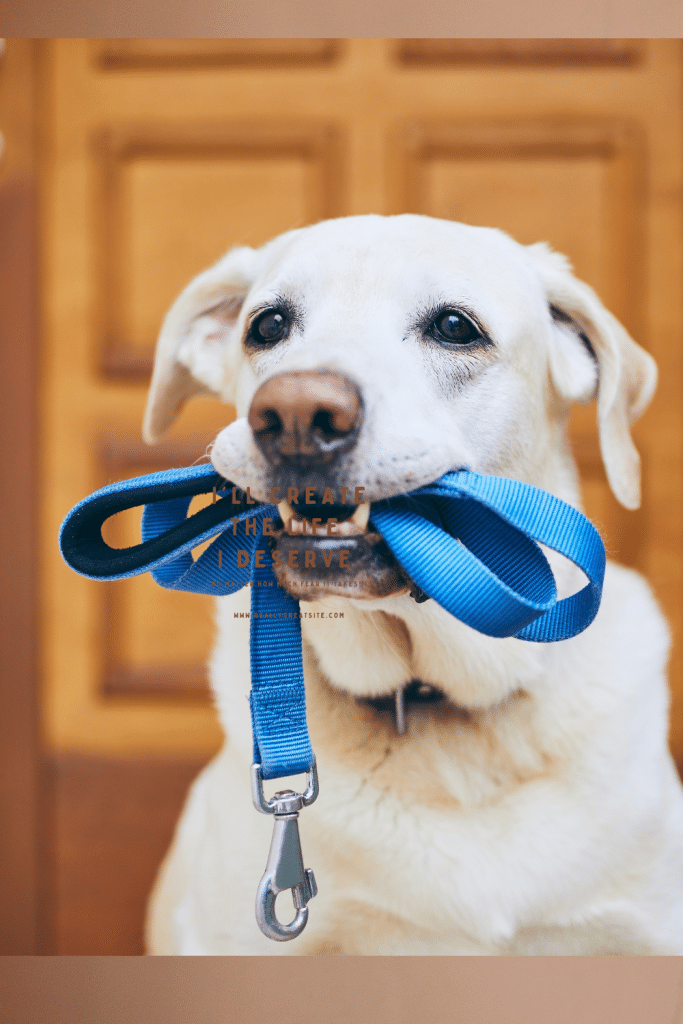Heel vs. Loose Leash: The Ultimate Dog Walking Showdown
This comprehensive guide dives deep into the world of dog walking, exploring the nuances of heel and loose leash techniques. We'll uncover the benefits of each, provide practical training methods, address common pitfalls, and help you determine which style best suits your canine companion. Get ready to transform your walks from frustrating fiascos into enjoyable adventures.
Understanding Heel and Loose Leash Walking: What are the Definitions and Key Differences?
Before we delve into the specifics, let's define our terms.
- Heel Walking: This is a structured and precise walking style where your dog walks consistently by your side, usually with their head or shoulder aligned with your leg. It requires focused attention from the dog and clear communication from the handler. Think of it as canine synchronized swimming.
- Loose Leash Walking: This is a more relaxed approach, where the dog walks on a leash that is slack, allowing them more freedom to explore and sniff. The goal is to maintain a comfortable pace without pulling, lunging, or straining the leash.
The key difference lies in the level of precision and control. Heel emphasizes obedience and close proximity, while loose leash walking prioritizes a relaxed and enjoyable experience for both you and your dog.
Benefits of Heel Walking: Why Might You Choose Heel for Your Dog?
Heel walking offers several advantages, particularly in specific situations:
"Unlock the Secrets to a Blissful, Healthier Puppy: Discover the Benefits of Holistic Housebreaking"
- High-Traffic Areas: In crowded city streets or busy events, heel provides maximum control and prevents your dog from getting into potentially dangerous situations.
- Obedience Competitions: Heel is a fundamental skill in many dog sports and obedience trials.
- Dogs with High Energy or Impulsivity: For dogs that tend to be easily distracted or reactive, heel can provide structure and focus.
- Training and Mental Stimulation: Heel work requires intense concentration, offering excellent mental stimulation and strengthening the bond between you and your dog.
Heel is NOT just about control; it is about clear communication and teamwork. It can be an incredibly rewarding experience for both dog and owner.
Benefits of Loose Leash Walking: Why is Loose Leash Walking a Popular Choice?
Loose leash walking is favored by many dog owners for its natural and stress-free approach:
- Reduced Tension: A loose leash creates a more relaxed atmosphere, making walks more enjoyable for both you and your dog.
- Increased Exploration: Loose leash walking allows your dog to sniff, explore, and engage with their environment, fulfilling their natural curiosity.
- Lower Stress for Reactive Dogs: A less structured approach can reduce anxiety in dogs prone to reactivity, as it allows them more space and control.
- Promotes Independence: It encourages your dog to make their own decisions within reasonable boundaries, fostering independence and confidence.
Loose leash walking aligns with the growing understanding of canine behavior and emphasizes a more partnership-based approach to dog ownership.
Heel vs. Loose Leash: A Side-by-Side Comparison Table
Let's break down the pros and cons in a clear, concise table:
| Feature | Heel Walking | Loose Leash Walking |
|---|---|---|
| Control Level | High | Moderate |
| Focus Required | High (for both dog and handler) | Moderate |
| Freedom for Dog | Limited | High |
| Best For | Crowded areas, obedience training, high-energy dogs | Relaxed walks, exploration, reactive dogs |
| Pros | Maximum control, mental stimulation, strong bond | Reduced tension, allows exploration, promotes independence |
| Cons | Can be stressful for some dogs, requires consistent training | Less control, may not be suitable for all environments |
Training Methods for Heel Walking: How Do You Teach Your Dog to Heel?
Heel walking requires patience and consistency. Here's a step-by-step approach:
- Start Indoors: Begin in a quiet, distraction-free environment.
- Lure into Position: Hold a treat near your leg to lure your dog into the heel position (head/shoulder aligned with your leg).
- Mark and Reward: As soon as your dog is in the correct position, say Yes! or click (if using a clicker) and give them the treat.
- Take a Step: Once your dog is consistently in the heel position, take one step forward while they maintain the position. Mark and reward.
- Gradually Increase Distance: Slowly increase the number of steps you take before rewarding.
- Add Verbal Cue: Introduce a verbal cue like Heel as your dog moves into the correct position.
- Practice Outside: Once your dog is reliable indoors, begin practicing in increasingly distracting environments.
- Use Positive Reinforcement: Always use positive reinforcement methods such as treats, praise, and toys. Never use punishment or force.
Remember to keep training sessions short and fun. Consistency is key to success!
Training Methods for Loose Leash Walking: How Do You Teach Your Dog to Walk on a Loose Leash?
Loose leash walking focuses on rewarding your dog for staying close and maintaining a slack leash. Here's how:
- Start with a Comfortable Leash: Use a lightweight leash that allows your dog some freedom of movement.
- Reward for Checking In: When your dog looks at you or comes back towards you, mark and reward.
- Change Direction Frequently: This encourages your dog to pay attention to you and prevents them from pulling.
- Stop When They Pull: If your dog starts to pull, stop walking immediately. Wait for them to release the tension on the leash before continuing.
- Reward Loose Leash: When your dog is walking on a loose leash, intermittently reward them with treats, praise, or a favorite toy.
- Use a Cue Word: Use a cue word like Easy or Let's Go to signal that you want your dog to walk nicely on a loose leash.
- Practice in Different Environments: Gradually introduce distractions as your dog progresses.
Patience is crucial. It takes time for your dog to learn to walk politely on a loose leash. Be consistent and celebrate small victories!
Choosing the Right Style for Your Dog: What Factors Should You Consider When Deciding?
The best walking style depends on several factors:
- Breed: Some breeds are naturally more inclined to heel (e.g., herding breeds), while others prefer a more relaxed pace (e.g., scent hounds).
- Temperament: Anxious or reactive dogs may benefit from loose leash walking, while confident, high-energy dogs may thrive with the structure of heel.
- Needs: Consider your dog's physical and mental needs. Do they need the mental stimulation of heel, or the freedom to explore their environment?
- Environment: Where do you typically walk your dog? A busy city requires more control than a quiet park.
Ultimately, the goal is to find a walking style that is both enjoyable and effective for both you and your dog. Don't be afraid to experiment and adjust your approach as needed.
Common Mistakes in Heel and Loose Leash Training: What Errors Frequently Occur and How to Avoid Them?
Even with the best intentions, mistakes can happen. Here are some common pitfalls and how to avoid them:
- Inconsistent Training: Consistency is key! Ensure everyone in the household uses the same cues and techniques.
- Using Punishment: Punishment can create fear and anxiety, damaging your relationship with your dog. Stick to positive reinforcement.
- Moving Too Fast: Progress gradually. Don't overwhelm your dog by introducing too many distractions too soon.
- Unclear Communication: Use clear and consistent cues that your dog understands.
- Ignoring Warning Signs: Pay attention to your dog's body language. If they are showing signs of stress or anxiety, adjust your approach.
- Expecting Perfection: Remember that your dog is not a robot. They will have good days and bad days. Be patient and understanding.
Equipment Recommendations: What Leashes, Harnesses, and Treats Are Best for Each Style?
- Heel Walking:
- Leash: A standard 4-6 foot leash is ideal.
- Collar/Harness: A well-fitting flat collar or a front-clip harness can be used. Front-clip harnesses can discourage pulling.
- Treats: High-value, small, and easily consumed treats are best for quick rewards.
- Loose Leash Walking:
- Leash: A longer leash (6-8 feet) or a retractable leash can provide more freedom (use retractable leashes with caution and awareness of surroundings).
- Collar/Harness: A comfortable harness that doesn't restrict movement is recommended.
- Treats: A variety of treats can keep your dog engaged. Consider using lower-value treats for frequent rewards and higher-value treats for challenging situations.
Troubleshooting: Addressing Specific Challenges in Both Heel and Loose Leash Walking
Let's tackle some common challenges:
- Pulling: For both styles, stop immediately when your dog pulls. Wait for the leash to slacken before continuing. Consider using a front-clip harness for more control.
- Reactivity: If your dog is reactive to other dogs or people, maintain a safe distance and redirect their attention with treats or toys. Consult a professional trainer for specialized guidance.
- Distractions: Start training in low-distraction environments and gradually increase the level of challenge. Use high-value treats to keep your dog focused.
Incorporating Both Styles: Can You Use Heel and Loose Leash Walking in Different Situations?
Absolutely! The best approach may be to combine both styles depending on the situation.
- Crowded Streets: Use heel for maximum control and safety.
- Quiet Parks: Allow your dog to enjoy a loose leash walk and explore their surroundings.
- Training Sessions: Incorporate heel work for focused obedience training.
Teaching your dog to differentiate between the two styles can provide flexibility and make walks more enjoyable for everyone.

Expert Opinions: What Do Professional Dog Trainers Say About Heel Versus Loose Leash Walking?
Many professional trainers advocate for a balanced approach, emphasizing the importance of understanding the individual needs of each dog and owner. They often recommend starting with loose leash walking to build a foundation of good behavior and then introducing heel work for specific situations or training goals. The key is to use positive reinforcement methods and create a positive and rewarding experience for both dog and owner.
Maintaining Consistency: How Do You Ensure Your Dog Maintains Their Training Over Time?
Like any skill, training requires ongoing maintenance. Here's how to keep your dog sharp:
- Regular Practice: Set aside short training sessions each week to reinforce the basics.
- Vary the Environment: Continue practicing in different environments to generalize the behavior.
- Positive Reinforcement: Continue to reward your dog for good behavior.
- Address Setbacks: If your dog starts to regress, go back to basics and review the fundamental steps.
Consistency is key. By making training a regular part of your routine, you can ensure that your dog maintains their skills and enjoys a lifetime of happy walks.
The Importance of Positive Reinforcement: Why is Positive Reinforcement Critical for Both Training Styles?
Positive reinforcement is the cornerstone of effective and ethical dog training. It involves rewarding your dog for desired behaviors, making them more likely to repeat those behaviors in the future. Positive reinforcement builds a strong bond between you and your dog, creates a positive learning environment, and promotes long-term success. Avoid using punishment or force, as it can damage your relationship with your dog and lead to fear and anxiety.
Beyond the Walk: How Does Walking Style Relate to Overall Dog Training and Behavior?
The principles of heel and loose leash walking extend far beyond the simple act of walking.
- Communication: Walking styles teach you how to communicate effectively with your dog, improving your overall relationship.
- Boundaries: Establishing boundaries during walks reinforces boundaries in other areas of your dog's life.
- Confidence: Successful training builds confidence in both you and your dog.
- Mental Stimulation: Training and walks provide essential mental stimulation, preventing boredom and destructive behaviors.
Mastering these walking styles is a gateway to a deeper understanding of your canine companion and a more fulfilling relationship.

